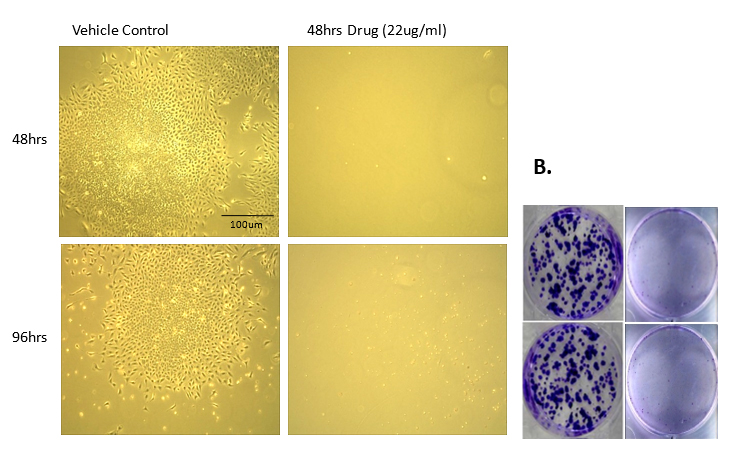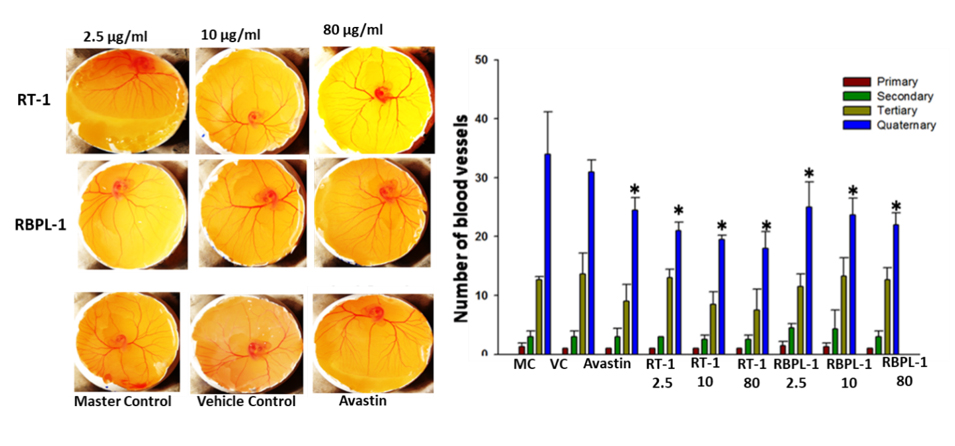Preclinical Studies: In Vitro & In Vivo
The preclinical studies conducted in our state-of-the-art-research laboratory, primarily focus on the assessing the efficacy of the drugs, their safety, probable mechanism of action, pharmacokinetic and pharmacodynamic properties. The pre-clinical testing can be broadly divided into in vitro (experiments done outside the living organism e.g. using cell lines) and in vivo (experiments done within the living organism eg Rat, Mice, Dogs, etc.) systems.
Using in vitro work, a drug’s efficacy can be studied by using the cancer lines grown in flasks in the laboratory or its mechanism of action can be studied by treating the cell lines with the drug and then observing the effect over a period of time. Scientists have isolated multiple cell lines representing each disease and in vitro testing is the quickest way to observe whether the drug has any effect on the disease or not. This is typically a first step in assessing the drug’s potential and accordingly, our formulations have undergone thorough evaluation using most appropriate cell line models and biologicals assays.
The studies can be monolayer based (2-dimensional) or spheroidal (3-dimensional) in arrangements wherein the later comes nearest to the living in vivo systems. Three-dimensional (3D) growth of immortalized established cell lines or primary cell cultures is regarded as a more stringent and representative model to perform in vitro drug screening as it mimics an in vivo tumor. These models serve as an intermediate screen between in vitro studies and resource intensive in vivo models that could help accelerate drug discovery and even reduce reliance on animal experiments.
Typical techniques used are Cell cytotoxicity assay, Apoptosis assay, Gene and protein expression, Cell cycle analysis, Invasion and Migration Assays, etc.
Another system ex-ovo can also be used to study specific properties of drug in using Yolk-Sac-Membrane model of the chick embryo.
For in vivo work, the studies are done on the living organism like Rat, Mice, Dogs as an experimental model, to see the efficacy of the drug, observe its toxic effects, dose levels, etc. There are specialized animal models to study a particular action of the drug on the disease. For studying cancer, most commonly used experimental model is SCID mice (where the immunity of the animal is switched off) wherein tumor cells are injected (Xenograft) into the animals for tumor formation and then drug treatment is given to see its efficacy on the developed tumor. The safety studies are usually conducted on the normal rats and mice as per the Schedule – Y guidelines for the development of drugs.
Our group has extensively used both the methodologies of research based on the scientific rationale, adequacy of the experimental model and regulatory requirements. A team of dedicated scientists carefully plan and design the experiments based on the type of the disease and the nature of the drug under study. The team is aided by a group of eminent advisors of national and international repute in the field of life sciences, drug discovery, applied research, microbiology, chemistry, etc. to fine tune the experimental approach.


Following are few examples of the studies done and their observations.





